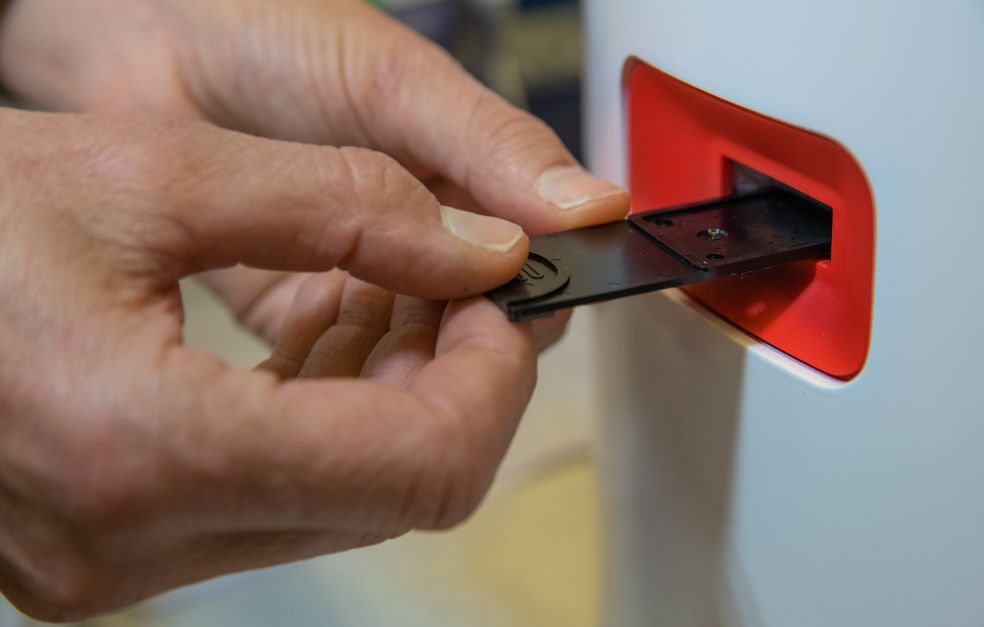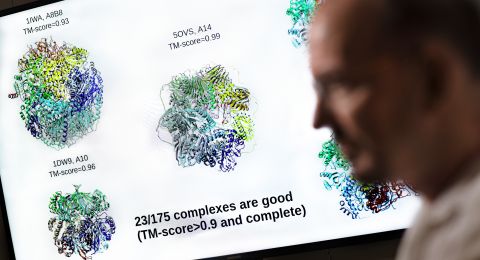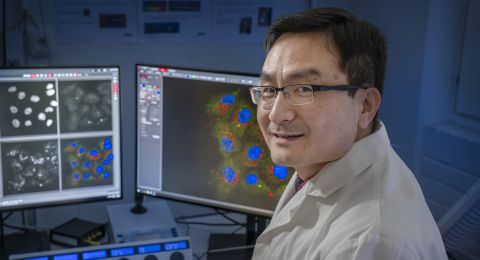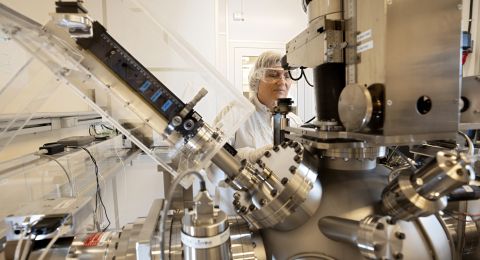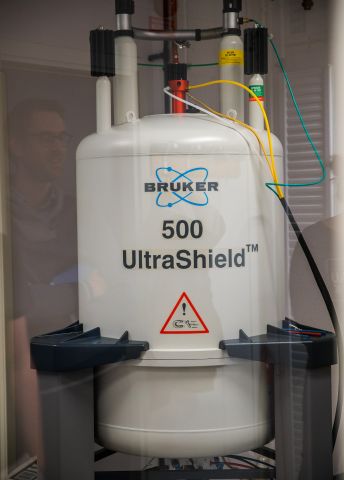
Project Grant 2016
Physical chemistry of peptide-lipid co-assembly: from lipid-rich to peptide-rich
Principal investigator:
Sara Snogerup Linse, Professor of Physical Chemistry
Co-investigators:
Ulf Olsson
Daniel Topgaard
Emma Sparr
Peter Jönsson
Institution:
Lund University
Grant in SEK:
SEK 30.7 million over five years
When proteins in solution spontaneously clump together, or aggregate, as researchers call it, they can form structures called amyloids. Some amyloids can reach a size where they can be seen with the naked eye as fibrous aggregates. Amyloids have become a popular subject of research, not least because they play a key role in several common diseases. Alzheimer’s, Parkinson’s and plaque in the blood vessels are just some of the conditions associated with amyloid formation.
But although amyloids have been studied, there is one relatively unexplored aspect: What happens if proteins are accompanied by fat molecules – lipids – when they aggregate.
This is what a research team in Lund will be finding out in a project funded by the Knut and Alice Wallenberg Foundation. The project is headed by Sara Snogerup Linse and Emma Sparr, both professors of physical chemistry at Lund University.
“What drives us is that we know that lipids are often present when the aggregates are formed. This happens in our brains, for example, and in many other biological systems. Other researchers have already found lipids in protein aggregates from brain tissue. So it is not unlikely that a lipid may be involved in the process. But what happens then? We want to understand the mechanism, which is actually quite a new angle,” Sparr explains.
Only a few years ago they did not know of any other research team studying the same phenomena. Now they see how former colleagues have begun to turn their attention to lipids.
“Our work has marked the beginning of a new approach,” Snogerup Linse comments.
Understanding how and when aggregates form
The human cell is a place where proteins and lipids meet; the cell membrane consists of fat in which proteins are embedded. The majority of current research on amyloid formation focuses on how proteins attach to the cell membrane. The Lund researchers are instead focusing on proteins and fats that detach themselves, and drift off to form their own structures. They want to understand the conditions under which proteins and fats aggregate together, and to study how protein-lipid aggregates differ from protein clumps, as well as the implications of these different aggregates.
“One question is whether they drive the formation of new aggregates, or transport via different membranes. But we are not examining the course of specific diseases. We are not medical specialists, and we shouldn’t venture beyond the limits of our expertise. But maybe we could eventually carry out tests on cells…?”
Sara Snogerup Linse turns to Emma Sparr to see what she thinks. The two of them designed the project, and selected the members of the research team. They have worked together for several years, albeit within different fields. Sara is an expert on proteins, Emma on lipids.
One summer’s day they booked a room in their department and stood at the whiteboard to sketch their ideas. They wrote down the questions they wanted answers to, and what was needed to achieve this. They thought about the methods that could be used, and the people who should be invited to join the project.
Everyone in the team researches in the field of physical chemistry, but their specialties and expertise vary. One researcher, for example, is good at labeling proteins with fluorescent molecules, and studying them under a microscope, another is an expert on NMR imaging technology, in which powerful magnets are used to determine how individual atoms are joined together in molecules, and one is an expert on X-rays and other methods of analyzing the structure of aggregates
Three proteins – two known and one wild card
The researchers in Lund have selected three proteins for the project. Two of them are known to interact with lipids. One plays a part in Parkinson’s disease, and the Lund researchers have already studied it in other contexts. They have no experience of the second protein, but it is known to play a part in the transport of fat particles in the blood in the healthy human body.
The third protein in the project forms a gelatinous material, known as a hydrogel, when dissolved in water at neutral pH. It occurs naturally in the human body, and is the subject of medical research. It might be possible to use it to develop moist wound dressings, or as a constituent in slow-release drugs. As yet, the researchers do not know if this protein even binds to lipids.
“But what we do know is that, however it is used in the future, it will exist in an environment in the presence of lipids. That means we need to know whether or not it interacts with them. And it’s exciting having a wild card to play with,” says Snogerup Linse.
The project involves pure basic research. The researchers will not be developing their own materials, drugs or medical technology. But there is nonetheless a connection to practical applications.
“The more we know about how a system actually works, the easier it will be to plan experiments at a higher level without missing anything. If we find that this phenomenon plays a key role in the formation of aggregates in the body, we will have to take account of this in the treatment of various diseases,” adds Snogerup Linse.
Text Lisa Kirsebom
Translation Maxwell Arding
Photo Magnus Bergström


